A Polishing the Chain ceremony took place on October 5 to recognize and renew the ongoing relationship between the university and Indigenous communities. Senior leaders, Queen's senators, staff, faculty, students, and Indigenous community members came together at the new outdoor Indigenous gathering space, located at the south end of Tindall Field.
The ceremony revisits the promise of the Tehontatenentsonterontáhkhwa (Friendship Wampum Belt), which was presented to Queen’s by the Clan Mothers at Tyendinaga, and the Grandmothers' Council of Katarokwi as the institution marked its 175th anniversary during a Senate meeting on March 7, 2017. The Friendship Wampum is placed at the head table during every Senate meeting as a reminder that the university sits on traditional Anishinaabe and Haudenosaunee territory as well as the commitments made among Indigenous communities and Queen’s over the years.
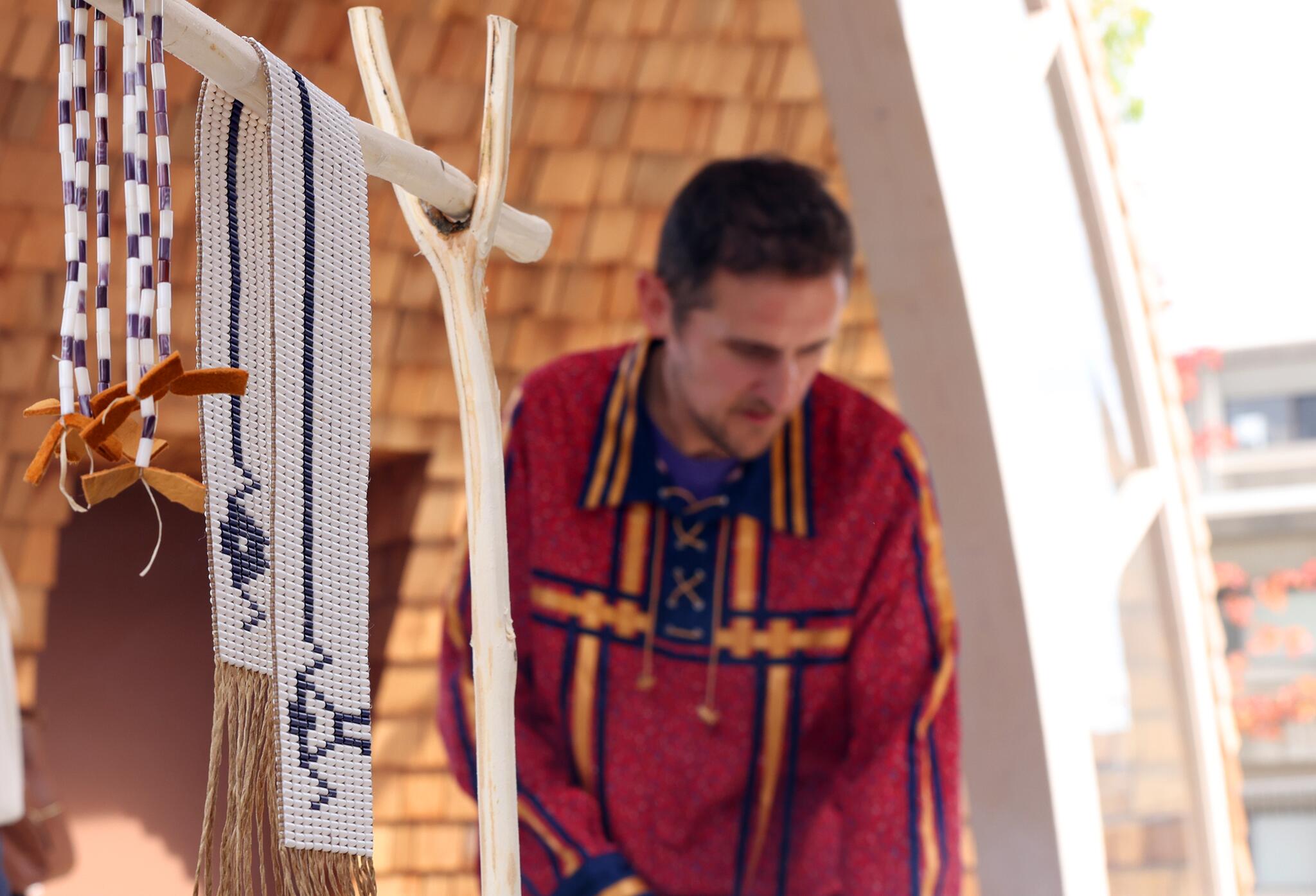
‘Polishing the Chain’ is a Haudenosaunee metaphor for the proactive maintenance of a relationship needing care and regular attention to maintain its strength and beauty and a ceremony has been held annually at Queen’s since 2017. During his welcome and opening address, Principal and Vice-Chancellor Patrick Deane explained that this year’s ceremony would be structured differently than in the past honouring and following Haudenosaunee diplomatic protocols, with two sides speaking back and forth to one another reflecting on their history, actions, any business arising, and plans going forward.
“Since we last gathered to polish the chain, we have had discussions with Indigenous community members to learn more about the traditions, metaphors, and ways in which we can make this important part of our collective ceremonial life more meaningful,” said Principal Deane. “Our hope is to evoke deeper levels of thought and engagement as we continue to learn from our challenging history and to support and care for our ongoing relationship.”
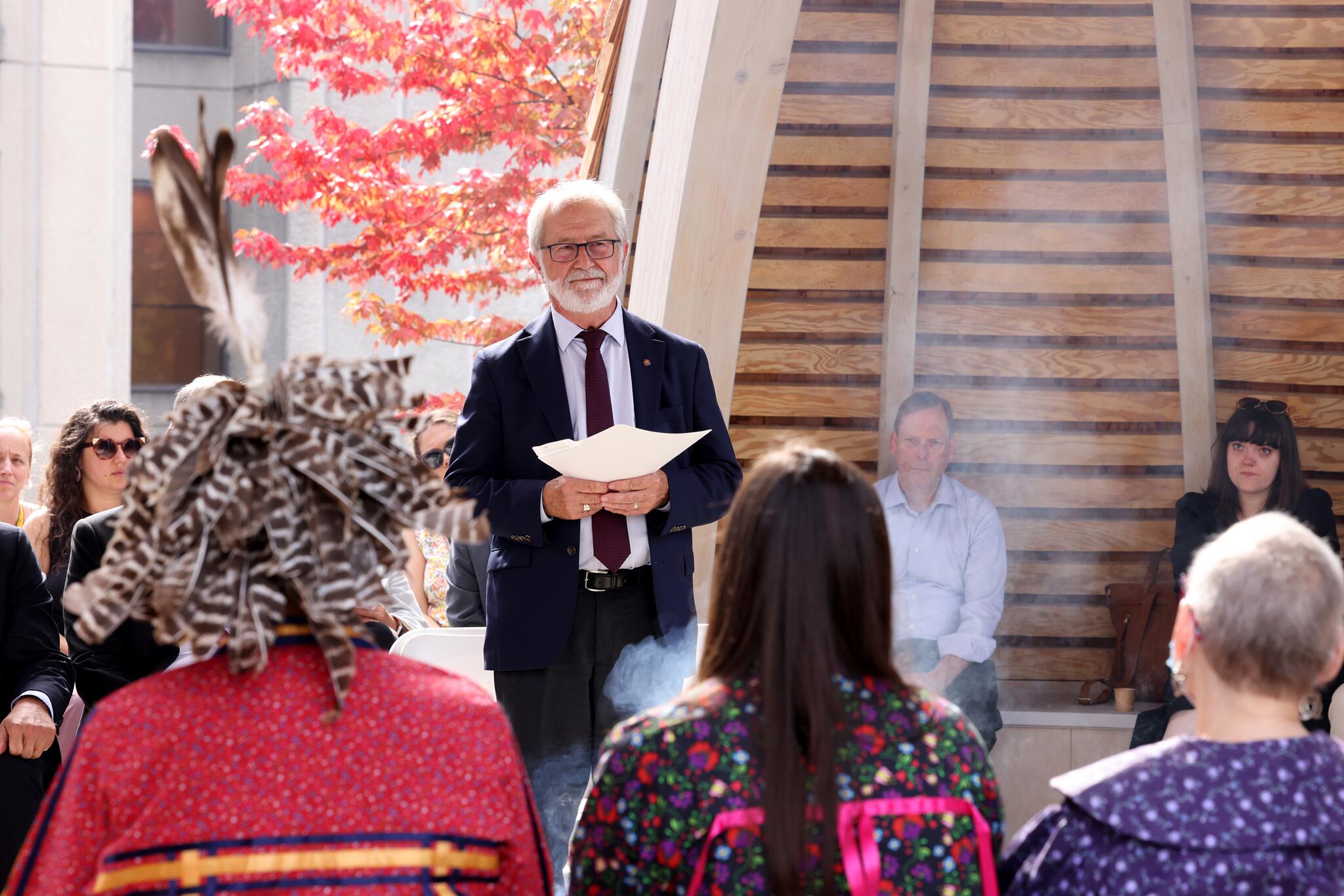
Thanyehténhas Nathan Brinklow, Director of the Indigenous Studies Program, who spoke on behalf of the Indigenous community in Kanyen’kéha (Mohawk) and English, invited Rahswahérha Mark Green, Professor of Civil Engineering, to deliver an opening address that included greetings and thanksgiving.
When negotiating the business for the day, Brinklow added an official condolence to the agenda to lift the burden of grief and highlight the importance of trauma-informed diplomacy and clear communication for maintaining healthy and productive relationships. This tradition comes from the foundational political narrative of the Haudenosaunee when the Peacemaker first encountered Hiawatha, a Mohawk man living in Onondaga territory who was consumed by grief.
“Grief, loss, and ‘baggage’ can block our ability to see, hear, and speak clearly interfering with our full participation in ceremonies like this and in our lives,” acknowledged Brinklow as he recounted the story of Hiawatha. “The Peacemaker used three strings of wampum and his words to lift Hiawatha’s grief so he could effectively continue his life’s journey."
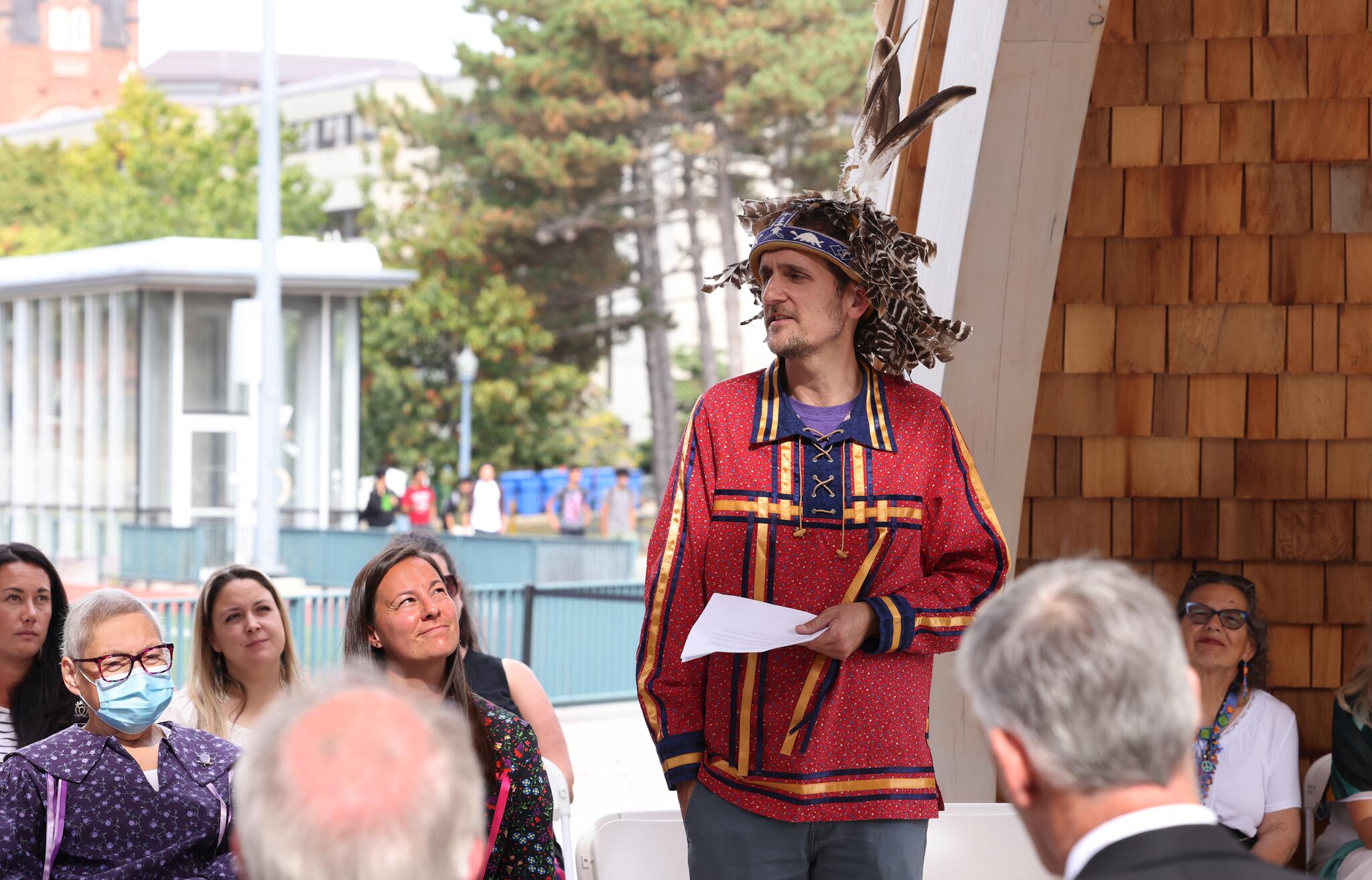
Three strings of wampum were passed to Queen’s, to acknowledge trauma and clear away any blockages or burdens, ceremonially and physically. At the next ceremony, Queen’s will pass these strings back. Attendees then participated by having a feather symbolically brush the dust from their ears, a piece of soft leather to wipe the tears from their eyes, and a drink of water to clear their throats.
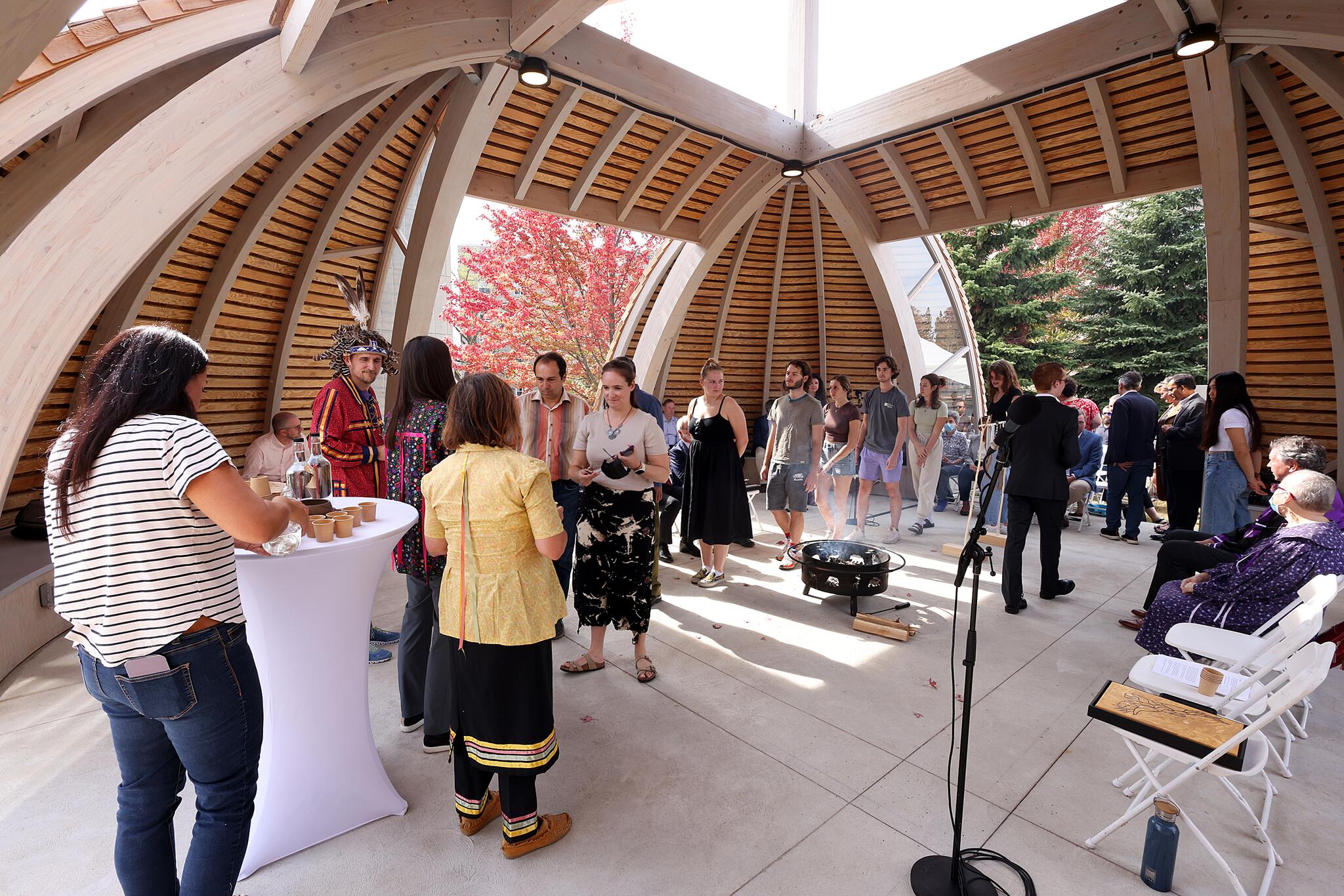
Once the meeting officially began, both sides recounted the history of the relationship, spoke of its current state, and offered direction for the future.
“Queen’s complicity in all the various strategies to advance the colonial project is beyond question and we must address this tarnished history and continue laying out a course for a better future,” said Principal Deane. “The university plays a key role in reconciliation and polishing the chain is a great opportunity to come together with Indigenous community members, reflect on our past, acknowledge the challenges ahead of us, and re-commit to our continued relationship of respect and support.”
Brinklow who also spoke on behalf of the Clanmothers and Grandmothers' Council in 2017, used the ship and canoe imagery on Kahswéntha / The Two Row Wampum to illustrate the relationship between Queen’s and Indigenous communities and how the canoe faces all the danger when sailing alongside a ship. “The three rows of white beads in between the two lines of purple beads represent the space we are in today as we meet to polish the chain and reformulate, renew, and restore our relationship that hasn’t always been positive,” said Brinklow. “In this space, we learn from each other, commit to ongoing openness and sharing, and set the course for a better way going forward where we can flourish.”
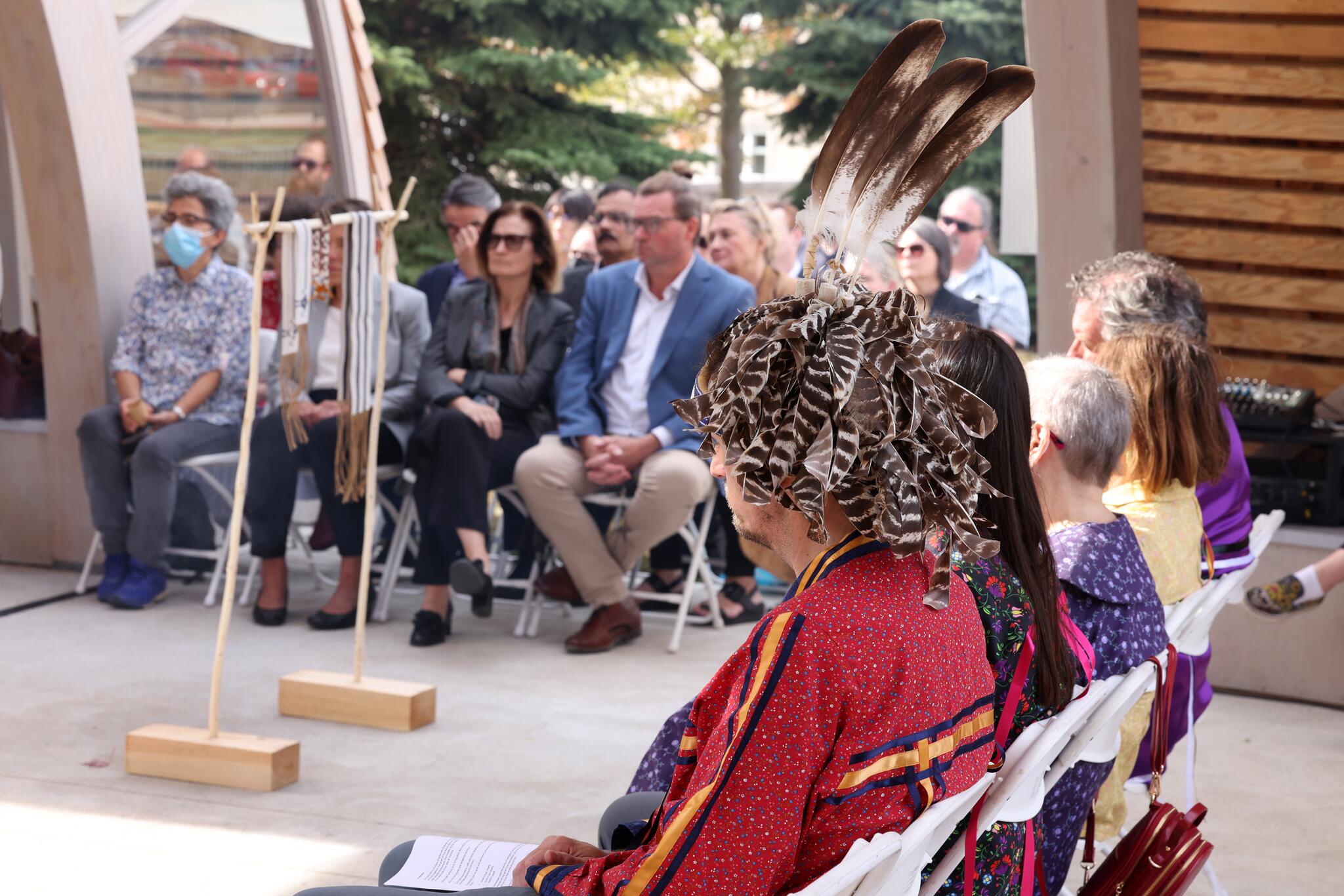
Duncan Hunter, Senate Vice-Chair, and Kandice Baptiste, Senior Director of Student Inclusion, Equity, and Belonging, Student Affairs, offered words of reflection and thanks before gifts were exchanged and the meeting’s close.
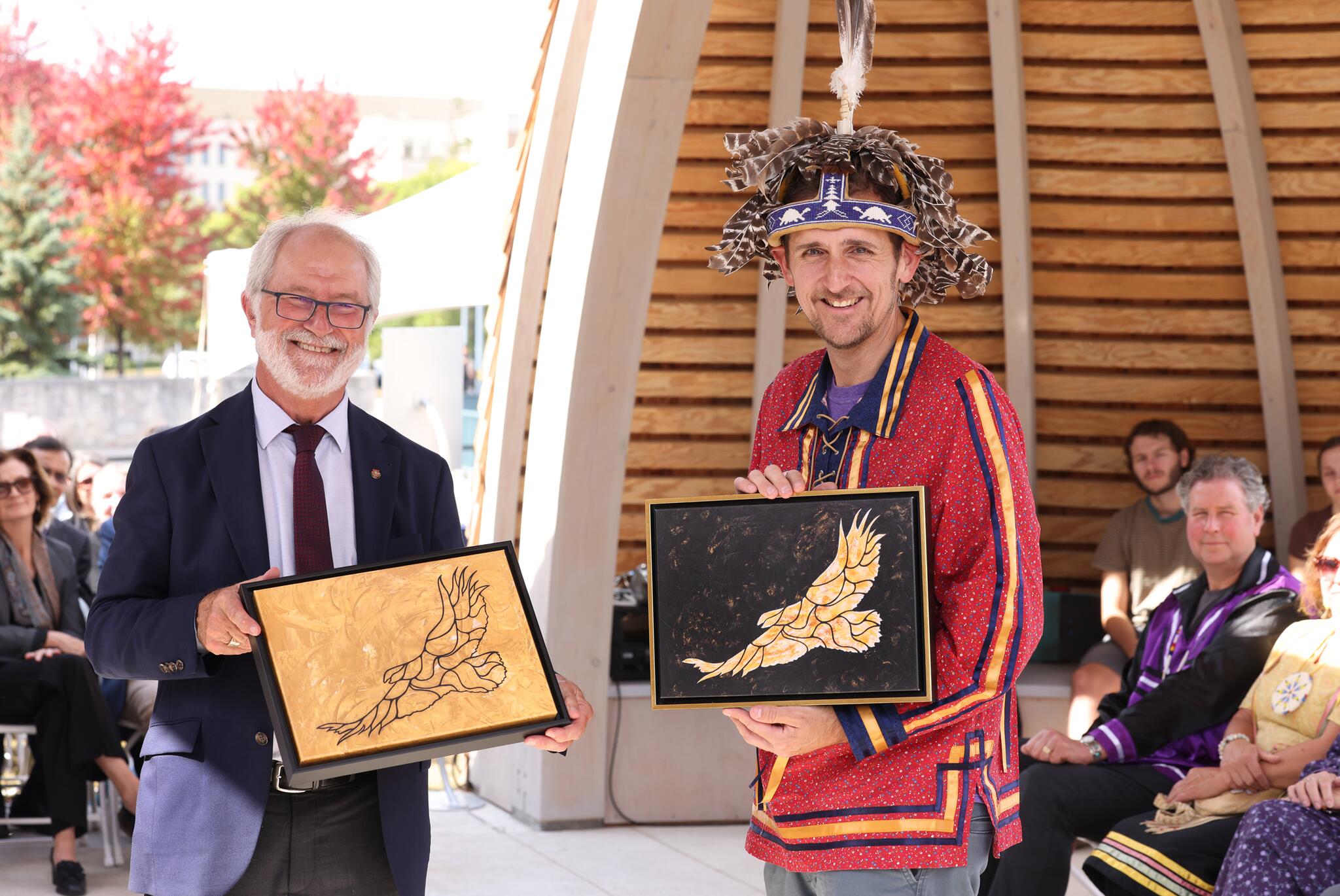
Following the ceremony, attendees enjoyed refreshments made by a local Indigenous chef, Lee Arden Lewis, whose menu centered on Indigenous cuisine with a focus on local and foraged traditional Haudenosaunee ingredients.
For more information about the ceremony and its history, visit the University Secretariat and Legal Counsel website.
Originally published in the Queen's Gazette.